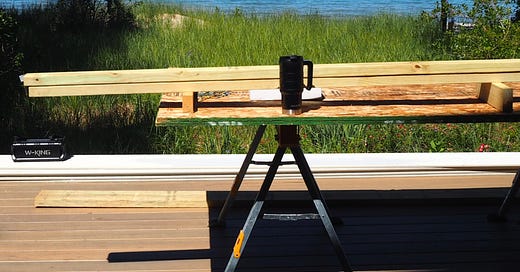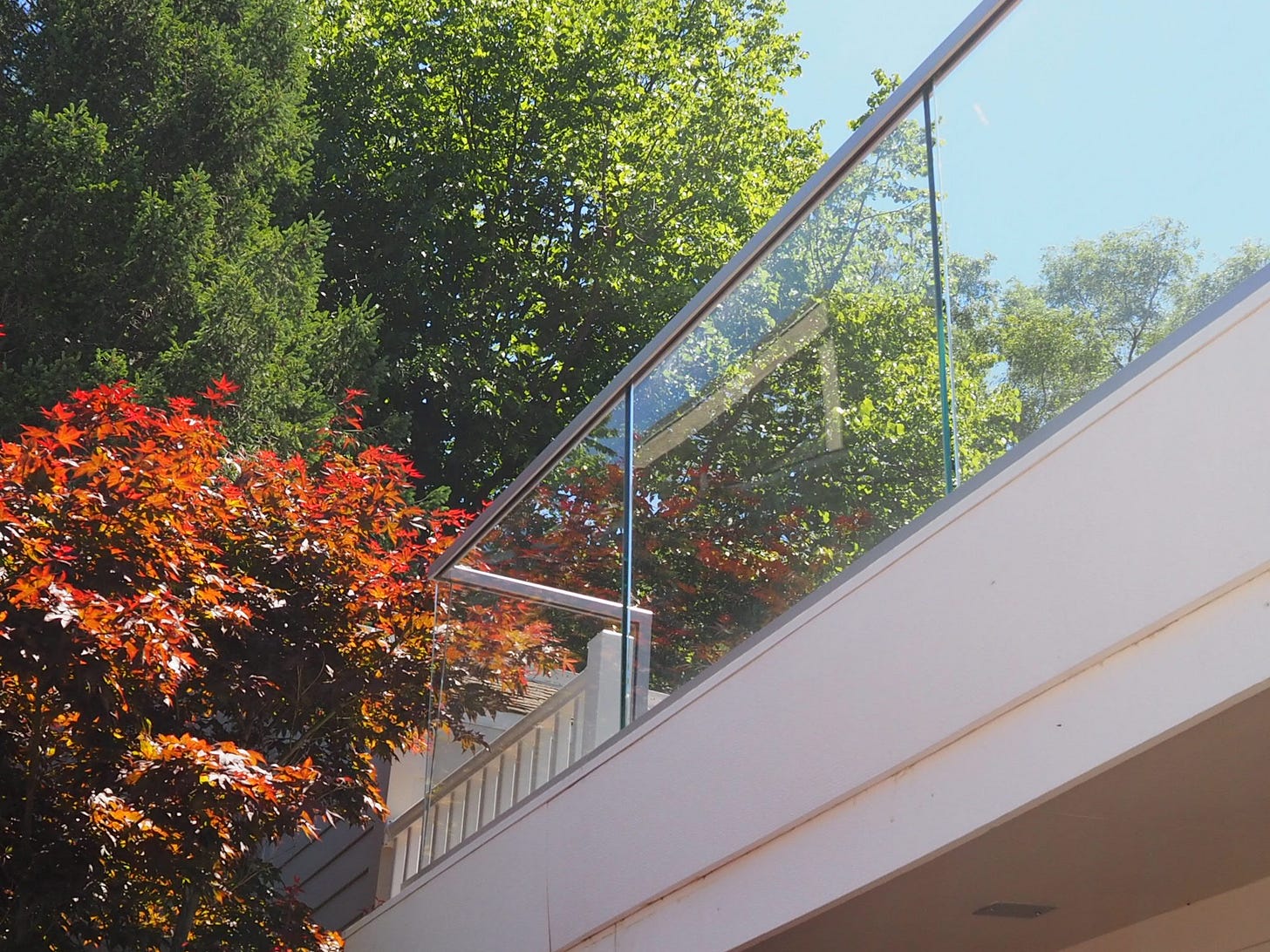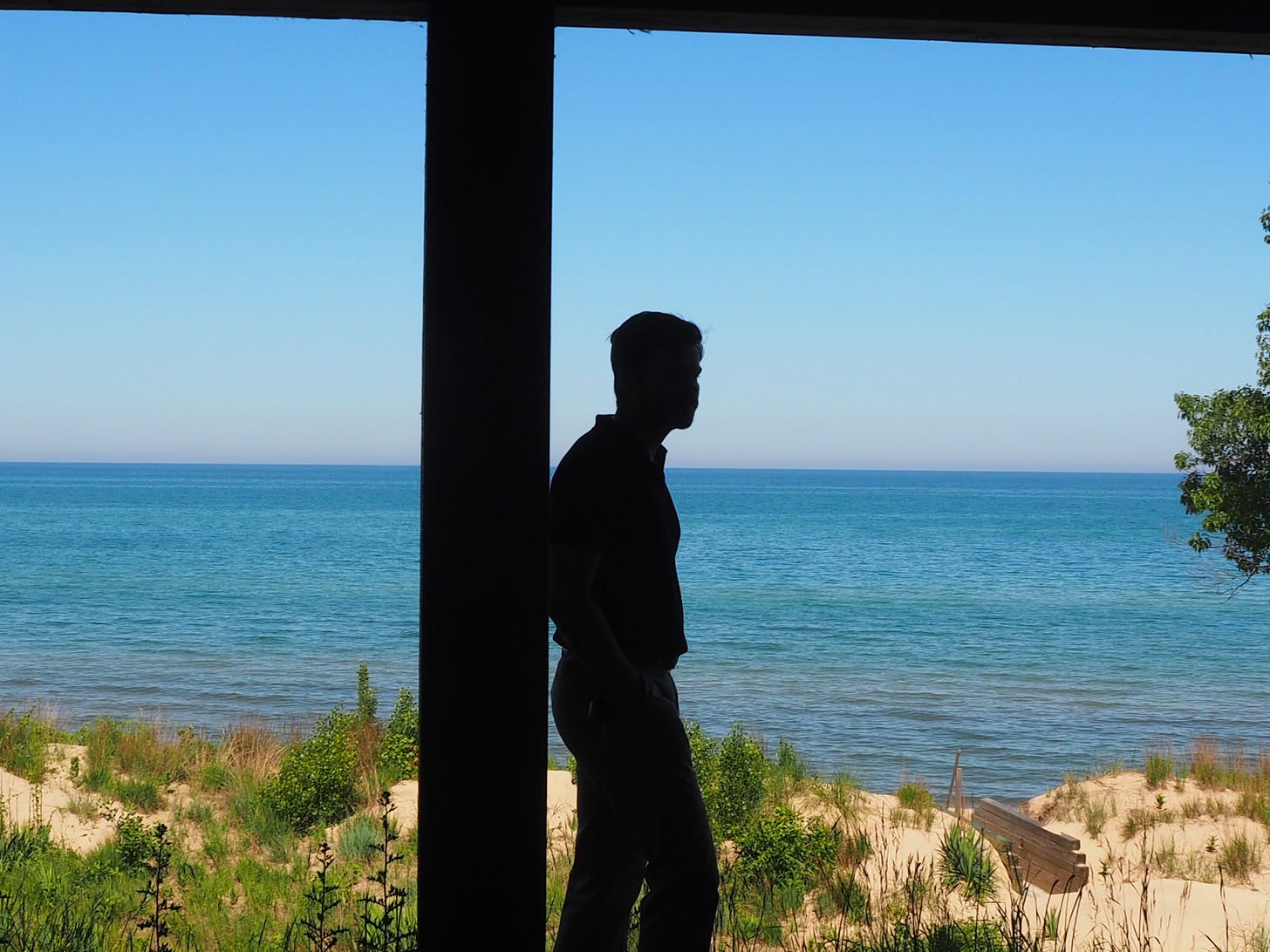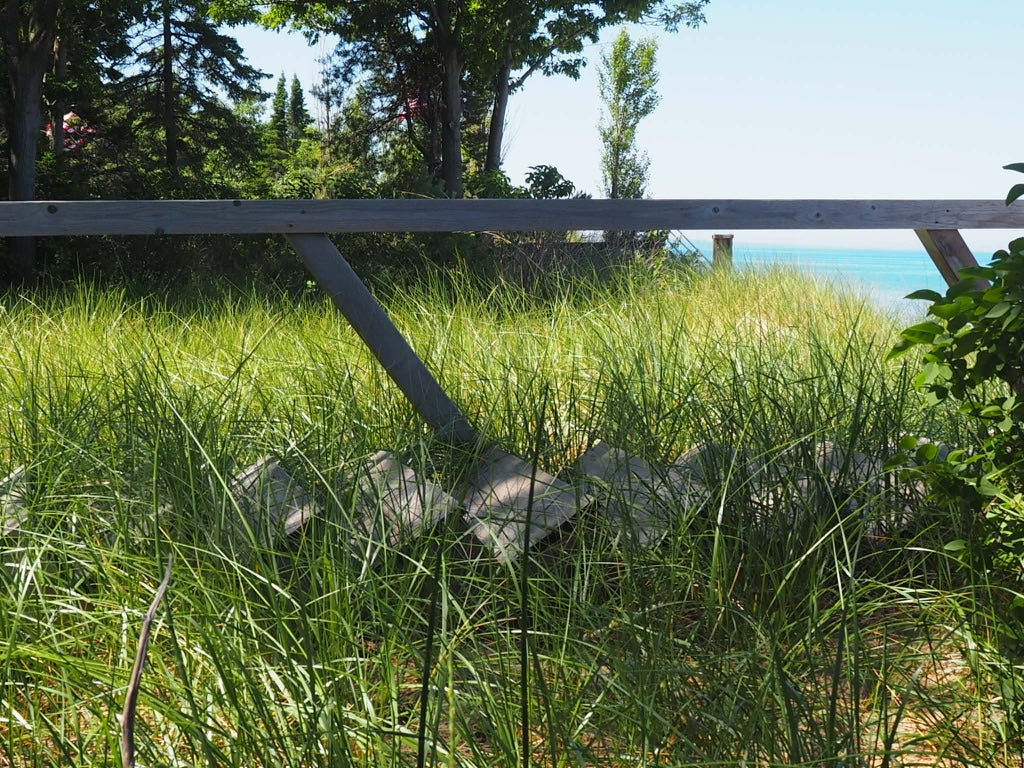On A Good Day, You Can See Chicago From Here
Meeting the builders renovating houses on the south east shore of Lake Michigan
Stairs and Railing for the People is a work journal from my perspective as an early-career user experience (UX) designer supporting in-house software MVPs at a direct-to-consumer stairs and railing manufacturer in northern Indiana. If you have thoughts, questions, or feedback about things I explore here, I’d love to hear from you.
I recently visited three Viewrail job sites on Lake Michigan with two company executives, a sales person, a project engineer, and a third-party installer. Each job site was a renovation incorporating Viewrail stairs or railing.
One of the executives led a conversation with each builder about their project, while the rest of us listened intently. The others chimed in with project-related answers, and me with questions, from time to time. Each builder had a unique story and is highly experienced in their field. Here’s what I learned:
Henry Blueskin
There’s a manufacturer called Henry Company making a product called Blueskin that is growing in popularity among contractors. It’s a self-adhesive air and vapor barrier membrane that provides moisture and water protection on building material services. The manufacturers’ product page boasts better insulation than traditional membranes used for this purpose, and it’s sold at retailers like Home Depot.

Modern since 2015
I knew this, but forgot until one of the executives shared a brief timeline of Viewrail’s history with one of the builders: The company was founded in 2001 under the name Iron Baluster. In it’s early years, the company made and sold traditional stairs parts under the name Stair Supplies. It wasn’t until 2015 that Viewrail began making and selling stair and railing parts, and systems, with a more modern look and finishes. As a result of the success of the new product offerings, the Viewrail brand was created.
Back to my roots
Each builder shared some of their story in conversation, and notably, they were all from the region. Place is an important factor in their many years of experience, from the kind of projects they take on to how they think about their work and life. Here are some of the quotes and exchanges that stood out to me during the visit:
“On a good day, you can see Chicago from here.”
“The owners live in Chicago. This is their summer home.”
“My uncle won an award for selling Studebakers [in Grand Rapids] during the Great Depression.”
“My grandfather built the [cottage] next door in 1950…My grandmother named [the road we were on].”
“I was building houses in Colorado for 33 years […] I’ve built houses for billionaires […] I was on a first name basis with President Ford. A Canadian chancellor…”
What brought you back?
“It was over crowded and overbuilt […] Back to my roots.”
Which version of Henry Kissinger did you meet? I heard he had many different personas over the years.
“We were smoking cigars and drinking Cognac. I don’t remember.”
“People hire me because I don’t have a punch list.”1
“I’ll quote you on a new build, but a [renovation]–that’s a different story.”2
“It’s Elkhart—we all know each others’ business.”
Residential Home Build Personas
After the last visit, we debriefed at a coffee shop. One of my takeaways was the distinction of the various personas frequently involved in residential home builds like the ones we visited:
Developers – develops land, often multiple houses in one area at a time
Builders – responsible for the high-level vision of executing the build plan
Contractors – responsible for much of the hands-on work
Architects – often design-driven, but with deep understanding of structure and the complexity of stairs and railing in the planning process
Interior designers – interested in color and finish selections
A punch list is a document listing the final work, including fixes, that needs to be completed before the project can be considered complete. This builder was saying he is a perfectionist, and he never has outstanding items or fixes at the time of a final walkthrough with a client.
This builder was explaining that he will give homeowners a more definite quote for a new build, but will not for renovations because “you never know what you’re going to find” during demolition as he put it. The homeowners of the site we were on had estimated around $600,000 for the project, but it was already at $1.5M due to the discovery of concrete that was poured at various levels of the house during previous renovations.








